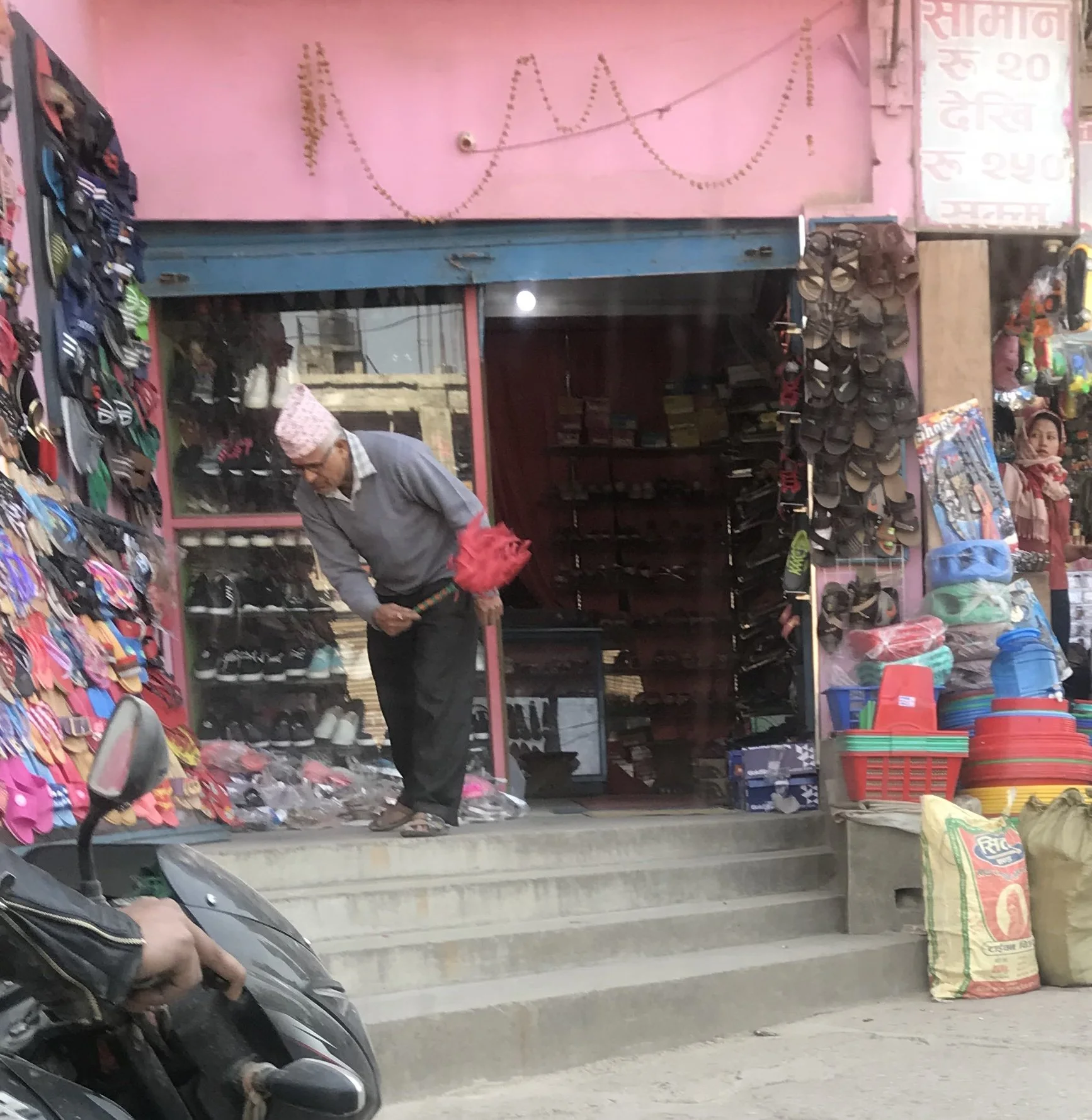Nepal and its Capital
An ‘unsweetened’ closer look at how things ‘tick’ in Nepal
I’d flown to Nepal’s capital on a scouting trip in response to a job offer to see whether I’d be happy teaching there for six to twelve months. However, even before landing in Kathmandu, I was concerned by what I saw from the plane’s window. Where above us the sky was a brilliant blue, below us the city was barely visible under the dark grey smog into which we were descending.
The school I’d been invited to was expecting to start operations within weeks. Its launch had been delayed by federal elections in previous months and some ministerial portfolios were still undecided – no decision could be reached as to who would take on Education and hence there was no one to sign off on the school’s registration. I was told, “Instability and corruption are all pervasive” as a kind of global explanation for all things ‘administrative’ in Nepal. As I write, the Deputy Prime Minister has just been sacked by the high court, another reflection of the instability that hampers progress. The school eventually opened, but a few months after classes commenced the money banked to pay the staff disappeared, so the school was forced to close its doors and left to pray for a miracle.
Below: Flying into Kathmandu in March, a busy main road seen from afar, city streets: (close up the the air doesn’t ‘look’ as bad, but people wear masks to protect their lungs), the traffic on unsurfaced side streets, a shop keeper dusting his wares and another with a red bucket wetting the road outside his shop to reduce the dust churned up by motorbikes.
Air quality: a serious issue
I’d decided to decline the job offer whilst there, a decision forced on me by my slightly asthmatic lungs. From day two, it was clear that my health and the city were incompatible, at least at that time of year. Every Western visitor in town and about a quarter of the Nepalese population were wearing masks on the street, not at that time to protect against Covid but against the smog. The city’s air particulate concentration regularly hits highs between the 400 to 500 mark which poses serious respiratory threats. Even ten minutes without my mask had me coughing all night with a pain in my lungs that I’d never experienced before. I didn’t repeat that error and donned my mask wherever I went.
It is essential to check the air quality of the month/s you plan to visit, especially if intending to spend much time in Kathmandu. I chose March – one of the worst months for pollution in the capital. The organisation called IQAir.com ranks Nepal 10th of 118 nations for air pollution that’s bad enough for the WHO to issues urgent health warnings especially for those with respiratory issues. The worst six months in Kathmandu are January to May and November through December. Summer can be uncomfortably hot, leaving the best months to visit August through October – after the mid-year monsoonal rains have washed clean the air.
It’s not only the emissions from vehicles and the industrial pollution that blows across the border from India that make it difficult to breathe in the Kathmandu Valley, but also the dust churned up by the heavy traffic. Little money is made available to repair road surfaces, some still showing earthquake damage. The dust mixes with the fumes from hundreds of motorbikes and small lorries with 2-stroke engines. Although these are ‘illegal’ such legislation is not enforced; no money, no staff, no interest – take your pick. The grime has shopkeepers spending much of their day dusting the wares displayed outside their stores. Government departments responsible for road repair and the Nepal Department of Archaeology (having replaced UNESCO to oversee the repairs to earthquake damaged buildings) all act to implement repairs in seeming slow motion.
Air travel safety: Another serious issue
The way government legislation, accountability and oversight works, or fails to work in Nepal has also been blamed for air travel safety issues. The most recent fatal Yeti Air crash was in January 2023, only eight months after the previous crash which also killed everyone on board. Nepalese investigators blame government inaction. Nepal ranks 12th of 207 nations worldwide for actual crash fatalities. It also has one of the worst accident analysis and reporting protocols, so accidents reoccur for the same reasons; crash reports are simply shelved. In his article, ‘Why Aircraft Crash So Often in Nepal’ journalist S. Poudel, writes, “Airline operators and government agencies rarely comply with safety regulations. Their ties with politicians shield them from scrutiny.” (The Diplomat, Jan 27, 2023). Most frightening is that even when maintenance is carried out, an older plane’s metal fuselage can shatter due to unidentified metal fatigue that occurs when the fuselage has simply outlived its ability to expand on ascent and contract on descent while containing the pressurised air that’s necessary for passengers to breathe at altitude. Low external pressure at high altitude requires the fuselage metal to expand to accommodate. When it can no longer do this, it tends to shatter. Poorer nations may keep older planes in service longer for lack of funds to replace them, and shortcuts in maintenance procedures occur for the same cost-vs-profit reason. I know of a pilot in Nepal who resigned because he could no longer trust that his helicopter would be maintained to aviation standards and hence could guarantee neither his own nor his passengers’ safety. All this is food for thought.
So, if you’re planning to visit Nepal, and charming Pokhara – which I highly recommend, I’d suggest you fly into Kathmandu (the only airport currently taking international flights) with an airline that has a trusted safety record and then take a cab to Pokhara. It’s quicker than the bus (which generally gets poor reviews unless you take the deluxe version with AC and comfortable seats).
A February 2023 one-way comparison between Kathmandu and Pokhara reads like this:
Delux bus: $AU10-15, or 7-11$US (10-13 hrs)
Buddha Air: AU$145-165 or 100-114$US (30 mins but add airport wait time and frequent delays)
Taxi/private car: AU$180-$200 or 125-139$US (7hrs. Example: Dep: 6.00 am, ETA: late lunch)
While flying is obviously faster, travelling by car may be a safer option and an interesting excursion offering the flexibility of exploring the countryside with small detours and stops along the way. The same holds true for most road- accessible, non-mountain-peak destinations.
In short, take care when choosing your location, and time of year to visit Nepal.
Below: the right choice vs the wrong choice













